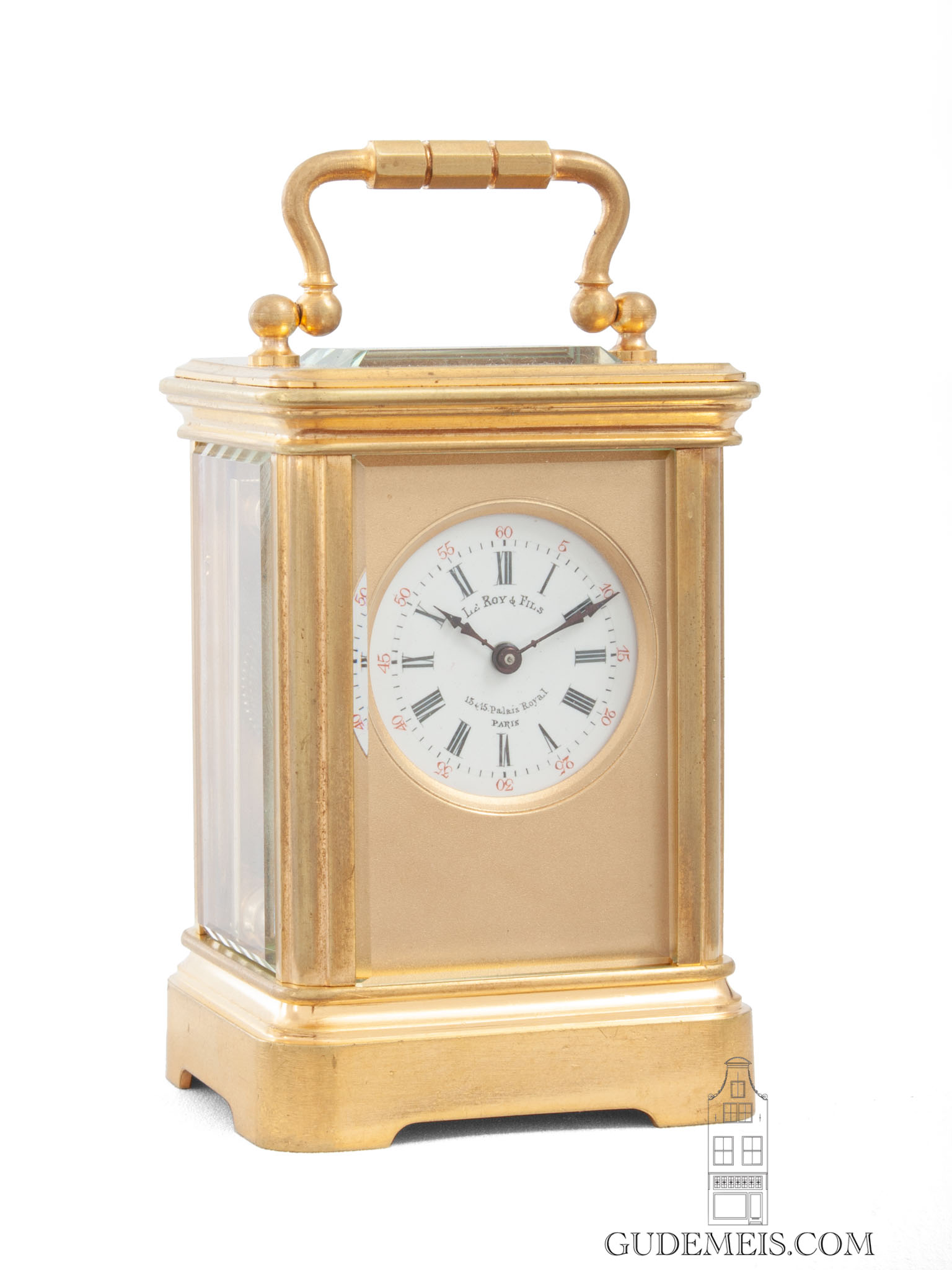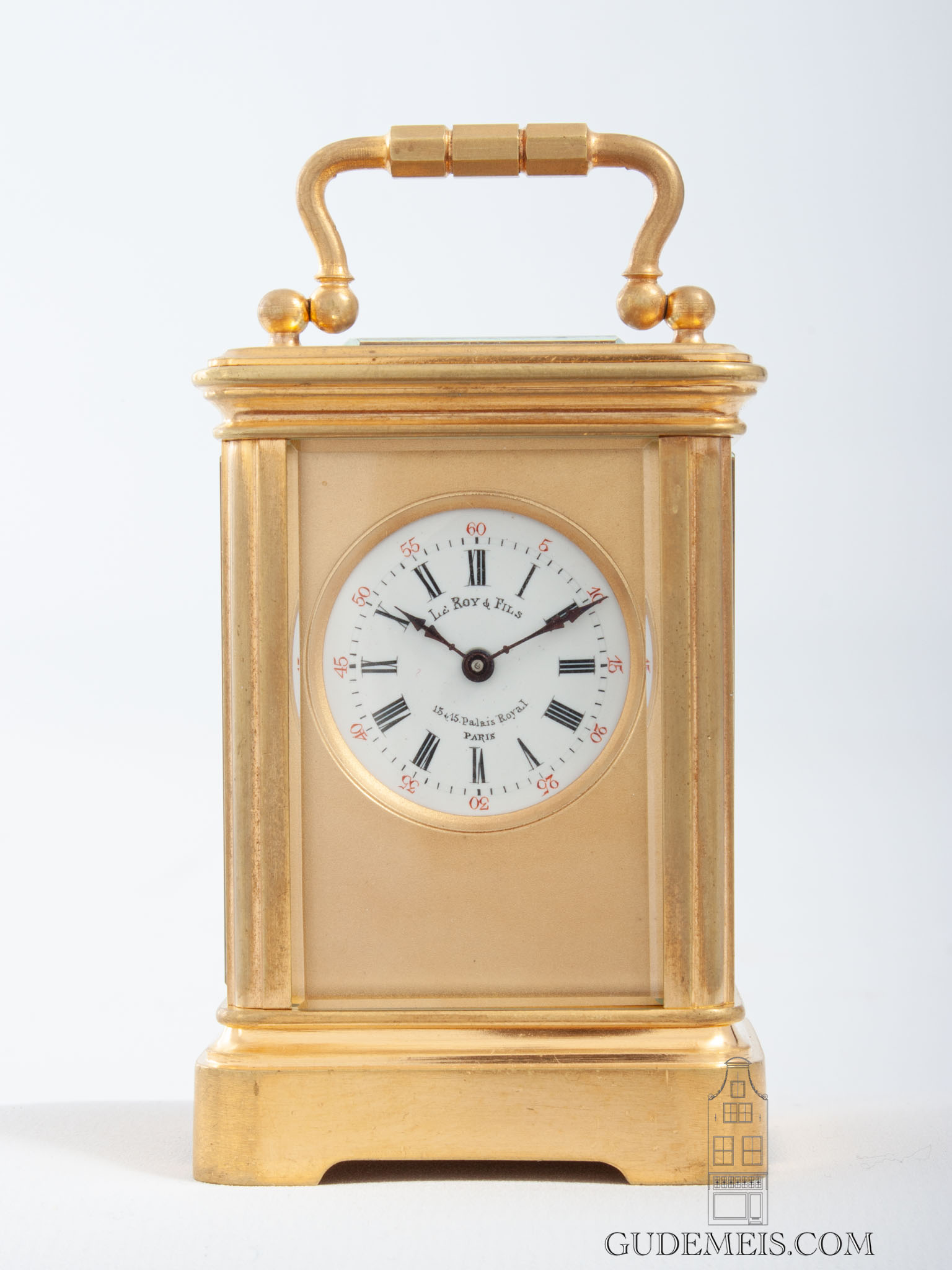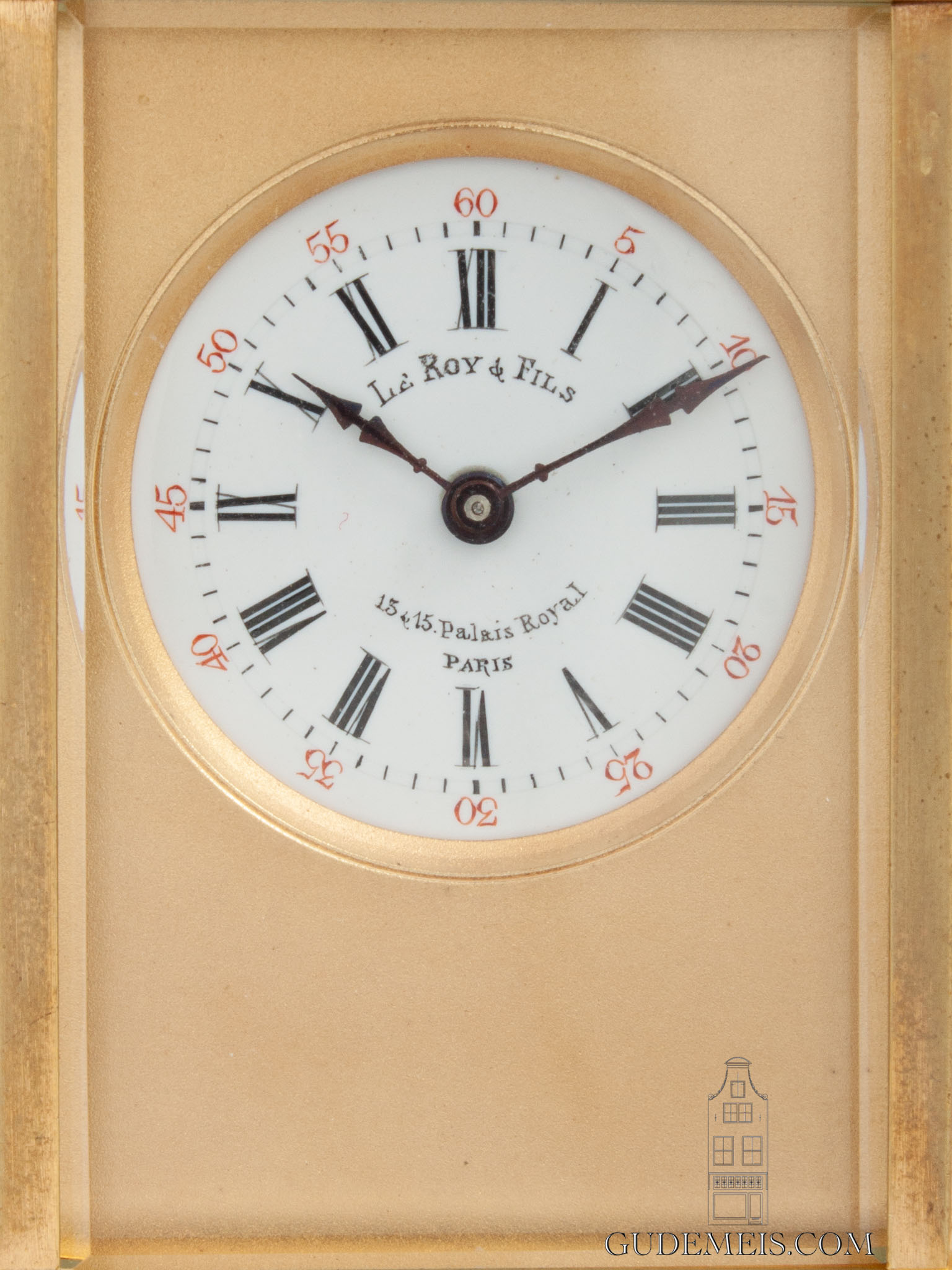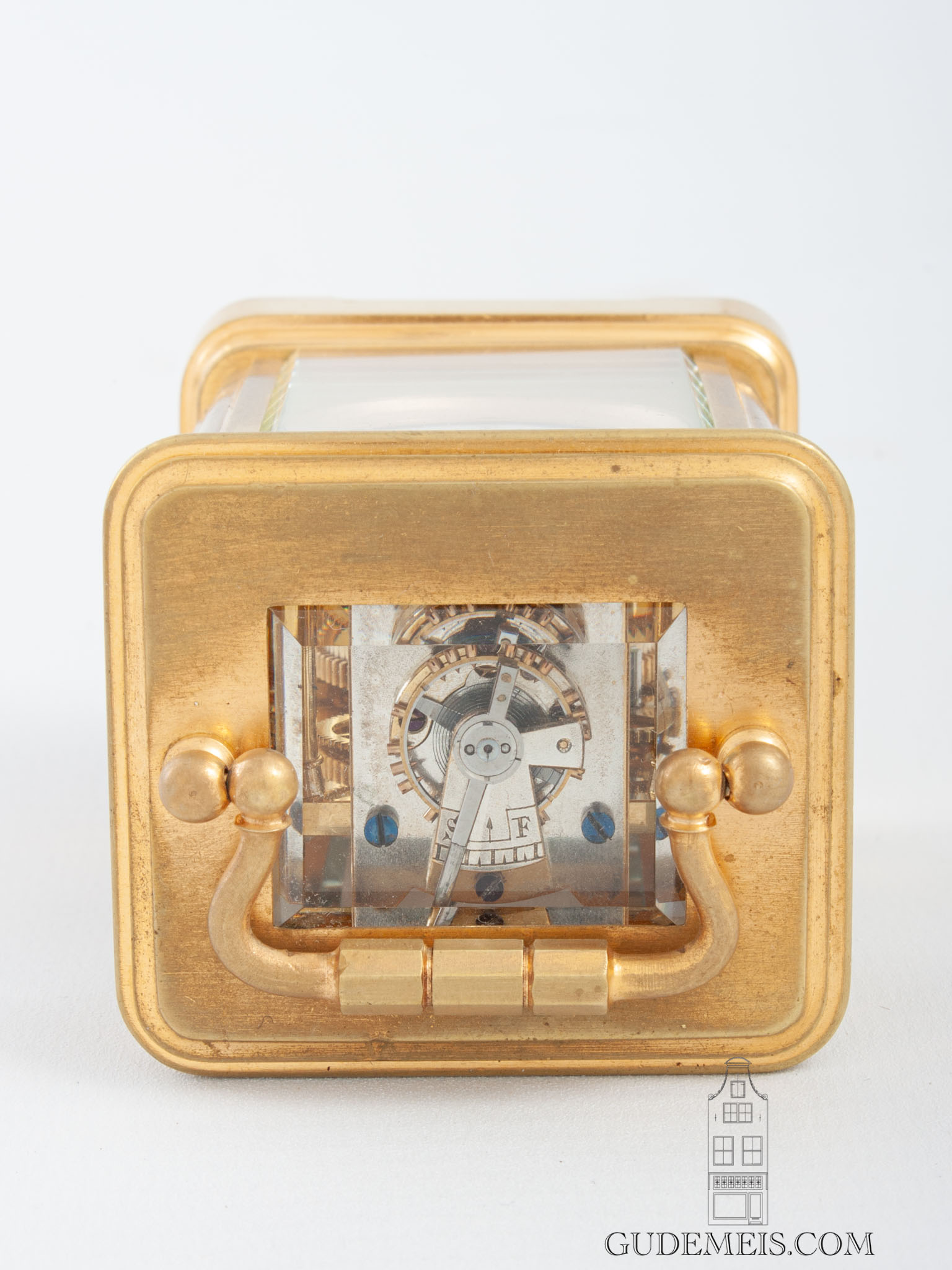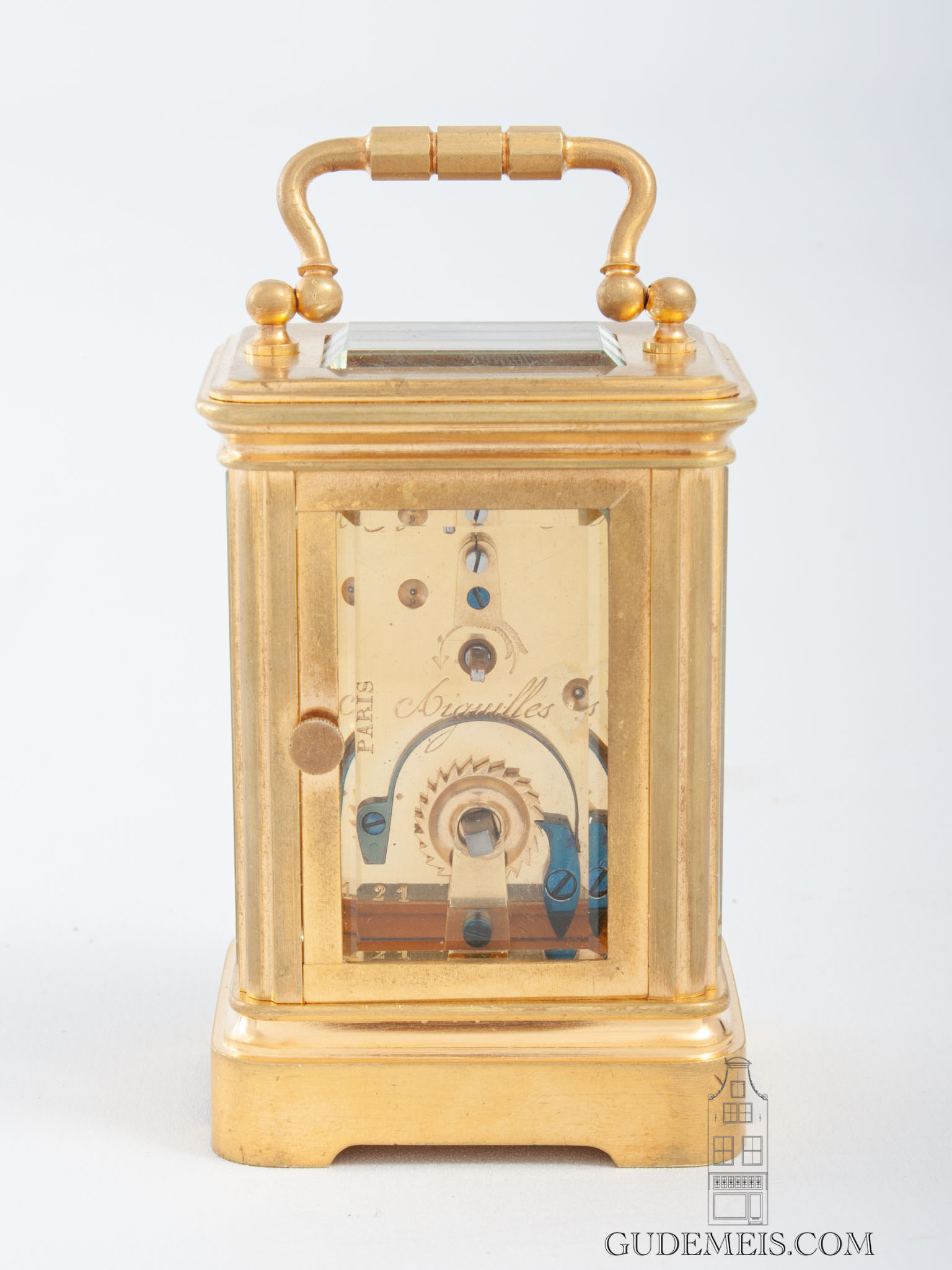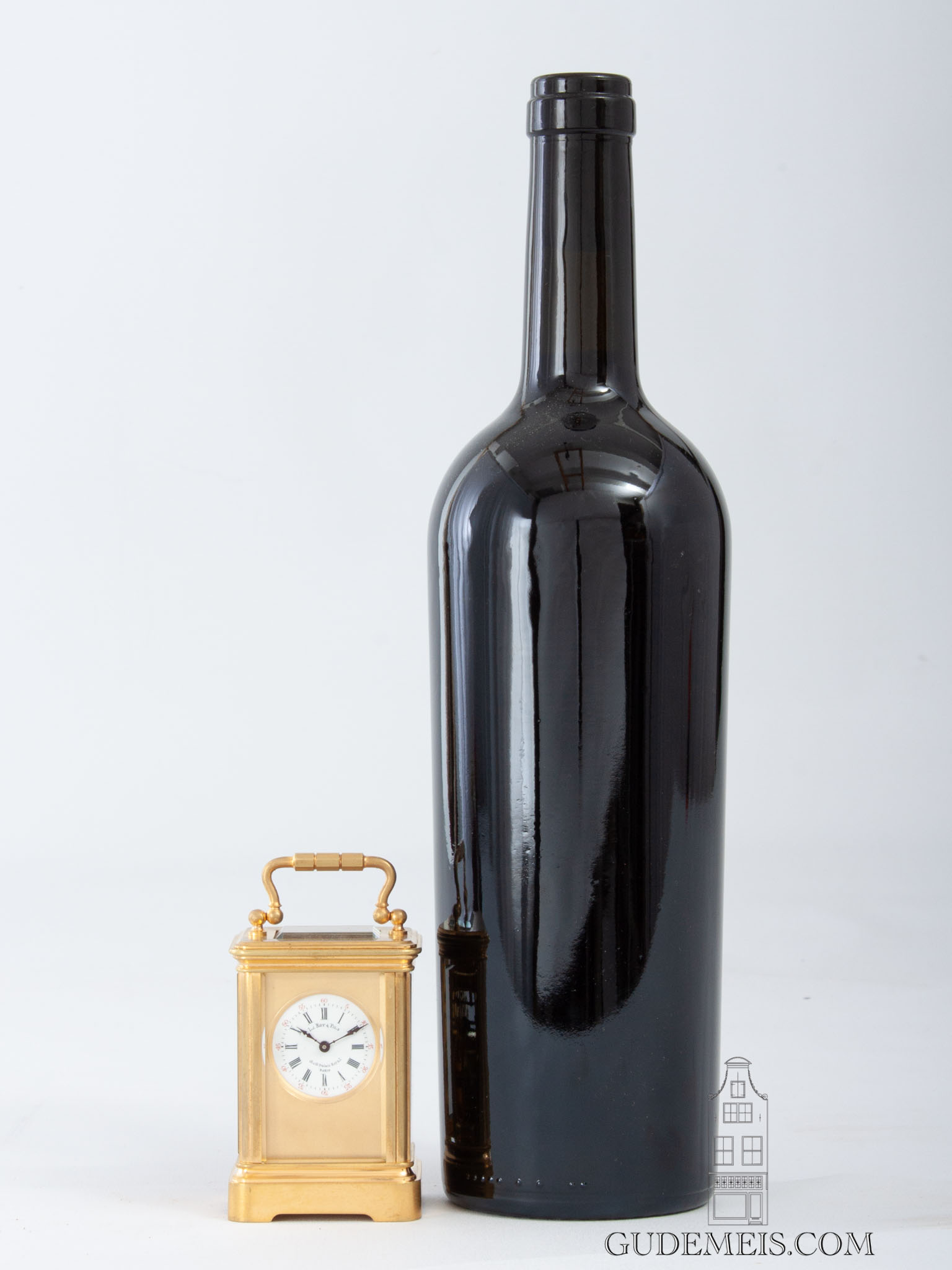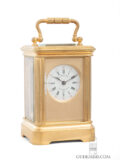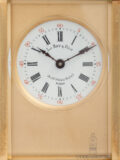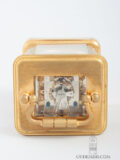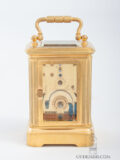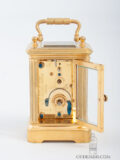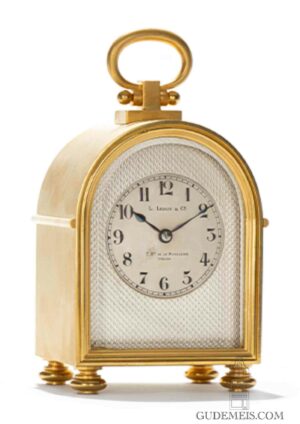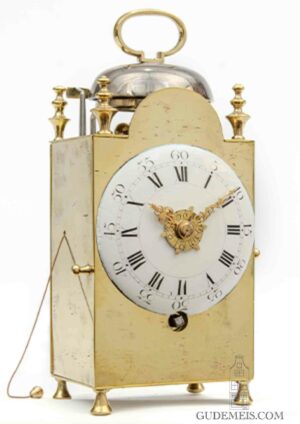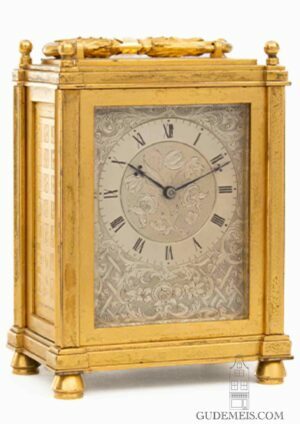A miniature French gilt brass corniche case carriage clock, Le Roy & Fils, circa 1890.
Description
miniature carriage clocks
Paul Garnier started producing a type of travel clock around 1830 which was relatively cheap but of good quality. This type soon proved to be popular and many other clockmakers strated making these carriage clocks. In the first decades of production these clocks were mostly functional and less decorative. But from the middle of the 19th Century on, more decorative models were introduced that fitted well in the interiors of the homes of the prosperous. By doing this, the makers catered for a different part of the market looking to increase their sales. Around 1870 a smaller type of clock movement was development making it possible to produce miniature carriage clocks. The smaller dimensions not only make these clocks sort of endearing and easy to place, they are also more collectible. This miniature carriage clock both is signed on the movement and dial for LeRoy & Fils. This renown firm sold to the rich with their name synonymous for top quality.
Le Roy & Fils
The 2.6-cm enamel dial is fitted recessed in a matted gilt mask. It has Roman numerals for the hours and red Arabic numerals for the five minute marking. The centre is signed Le Roy & Fils 13 & 15 Palais Royal Paris. The hands are made of blued steel.
Lever escapement
The movement is driven by a spring barrel and is of eight day duration. It has a platform escapement with lever escapement in combination with a bi-metallic balance. The screwed down movement plates are similarly signed.
Corniche case
The gilt brass case is surmounted by a carrying handle and has beveled glass panels to all sides. The escapement is visible which is a nice feature. The case has sharp mouldings throughout and is numbered on several parts 14121. The type is called corniche case.
